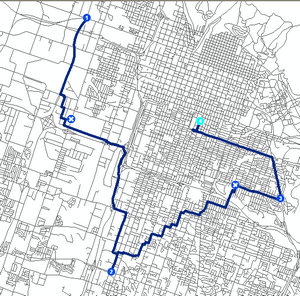The Shortest Path
True or false :
Given a weighted graph, the shortest path from a source to a destination is calculated using the shortest path algorithm. If the weight of every edge is increased by one, the shortest path will necessarily remain the same.

This section requires Javascript.
You are seeing this because something didn't load right. We suggest you, (a) try
refreshing the page, (b) enabling javascript if it is disabled on your browser and,
finally, (c)
loading the
non-javascript version of this page
. We're sorry about the hassle.
Consider the following: Imgur
Imgur
As it stands, the blue path is shorter than the red path. However, after incrementing everything two times, the red path becomes shorter than the blue path.